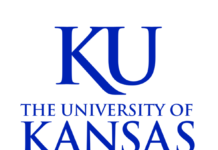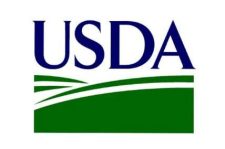From the Office of Public Affairs | http://www.news.ku.edu
Headlines
Rice paddy snake diversification was driven by geological and environmental factors in Thailand, molecular data suggests
LAWRENCE — A University of Kansas study of rice paddy snakes in Southeast Asia gives key details to their diversification and natural history, adding molecular evidence that the rise of the Khorat Plateau and subsequent environmental shifts in Thailand may have altered the course of the snakes’ evolution some 2.5 million years ago. The researchers relied on molecular data along with ecological niche modeling, which depended on data about where specimens were located in the field. This approach could help conservation efforts going forward, or predictions of how species might fare in climate change scenarios.
Digital scholarship illuminates life of important medieval poet
LAWRENCE — Tapping into digitized wills and other legal documents, University of Kansas scholar Misty Schieberle unearthed new information about the family and network of medieval poet Thomas Hoccleve, whose financial worries and mental health struggles remain relevant to readers today. “Thomas Hoccleve of London: New Evidence of Hoccleve’s Family and Finances” was published in the journal Studies in the Age of Chaucer.
Full stories below.
————————————————————————
Contact: Brendan Lynch, KU News Service, 785-864-8855, [email protected], @BrendanMLynch
Rice paddy snake diversification was driven by geological and environmental factors in Thailand, molecular data suggests
LAWRENCE — A University of Kansas study of rice paddy snakes in Southeast Asia gives key details to their diversification and natural history, adding molecular evidence that the rise of the Khorat Plateau and subsequent environmental shifts in Thailand may have altered the course of the snakes’ evolution some 2.5 million years ago. The findings were published today in the journal Scientific Reports.
Researchers say the implications could help tell the story of diversification more broadly in the region.
“This paper concerns mud snakes typically found in aquatic systems across Southeast Asia, South Asia, East Asia, Australia and New Guinea,” said lead author Justin Bernstein, a KU Center for Genomics postdoctoral researcher. “Deeper-level relationships regarding their evolution have recently begun to be studied, particularly through genome-scale data. However, finer-scaled evolutionary patterns remain to be fully revealed.”
Bernstein, who currently serves at the University of Texas-Arlington, said the mud snakes, a family known as the Homalopsidae, are commonly found today in aquatic systems. Bernstein’s newest work on the homalopsids focuses on a subgroup called rice paddy snakes that are commonly found in agricultural fields and freshwaters streams in Southeast Asia.
Although recent research has touched on the diversity of rice paddy snakes, their geographic distribution has touched off scientific speculation: One hypothesis suggests that around 2.5 million years ago, a plateau in Central Thailand, known as the Khorat Plateau, emerged from the ground, leading to the separation and subsequent diversification of snake populations over time. Indeed, molecular data provided insights into the timing of species diversification that aligned with the formation of the plateau.
However, a later genome-scale study challenged this hypothesis by pushing the divergence date backward, predating the plateau’s formation.
“This discrepancy raises questions about the accuracy of different datasets in determining evolutionary timelines,” Bernstein said. “To address this, our paper employs more limited molecular datasets but with more robust analyses and denser sampling to test the hypothesis. Our results suggest that the group indeed diversified after the Khorat Plateau rose, and environmental changes over time further contributed to their divergence.”
Past that, the research team found varied differences in preferred habitats among different snake species using past and present niche models, hinting that other environmental factors might have influenced their routes toward diversification and geographic distribution.
Bernstein’s collaborator included co-author Rafe Brown, KU professor of ecology & evolutionary biology and curator-in-charge of the Herpetology Division at KU’s Natural History Museum & Biodiversity Institute. Other co-authors included Harold Voris and Sara Ruane of the Field Museum in Chicago; Bryan Stuart of the North Carolina Museum of Natural Sciences; the late Daryl Karns of Hanover College; Jimmy McGuire of the University of California-Berkeley, Djoko Iskandar of the Institut Teknologi Bandung in Indonesia; Awal Riyanto of the National Research and Innovation Agency of Indonesia; Camilo Calderón‐Acevedo of the State University of New York: College of Environmental Science and Forestry; Marcelo Gehara of Rutgers University-Newark; and J. Angel Soto‐Centeno of Rutgers University-Newark and the American Museum of Natural History.
Bernstein and his collaborators relied on molecular data along with ecological niche modeling to shed new light on the rice paddy snakes, which depended on data about where specimens were located in the field. This approach could help conservation efforts going forward, or predictions of how species might fare in climate change scenarios.
“The whole point of ecological niche modeling, put simply, is if I take, say, 100 occurrence points for those snakes, and then I use 19 environmental data layers that correspond with each point, and compare it to a background — which would be the landscape with its environmental data regardless of snake occurrence points — do we see correlations and patterns?” Bernstein said. “You’re trying to determine the habitat suitability of your species of interest across a broad landscape, including areas where they have not been recorded from.”
He said the environmental data includes variables like temperature differences, seasonality and precipitation at different points in time, such as quarterly, monthly or annually.
“These 19 layers containing the environmental factors are ‘stacked’ in a way that each GPS coordinate — where a snake occurrence record is — has a set of 19 environmental variables associated with it,” Bernstein said.
For instance, via this approach Bernstein said while these rice-paddy snakes don’t exist in the Philippines, there are suitable habitats based off of where they live in Indochina.
“Hypothetically they could live there,” he said. “That doesn’t mean they do. There is no evidence suggesting they are able to get across ocean waters and enter the Philippines, and it would be highly unlikely for that scenario to occur. But the analysis is just indicating there is suitable habitat elsewhere, in addition to where we find them now, and that can be really useful. If it’s a continuous landscape and you haven’t found any individuals of a species in a particular area, but you see high habitat suitability, maybe you can go find a population that is presently unknown to exist.”
The research builds on two of Bernstein’s earlier works. One study combines genetic analyses of older museum specimens’ mitochondrial DNA with fresher genetic samples from recent field collections of mud snakes to learn more about diversity of homalopsids, including rice paddy snakes. The other study is a more focused study that described a new rice paddy snake species and posited the hypothesis of the Khorat Plateau based on current data but lacked the power to test it.
While many species of the mud snakes are drab, Bernstein said others are highly charismatic.
“Some have tentacles as appendages on their face,” he said. “You could find two of the same species in one hole, like a mud lobster hole, where one is white and black, and the other is bright red and black — very striking. Some have speckled yellow bellies, while others are black with bright orange flecks and stripes down their back. And other species have unique behaviors that are not seen in the 4,000-plus species of snakes. They are truly stunning snakes.”
Ultimately, the mud snake’s value may be in serving to show how species, and their morphological diversity, evolves over time, as well as how other organisms may react to changes in the ecosystems they live in.
“I saw a lot of opportunity in them as a model system for investigating biogeography,” Bernstein said. “Honestly, using them more as a model system for understanding how species change or remain stable over time has been really valuable. We have several studies we want to pursue further, and many more in the works, and it all begins with understanding their evolutionary relationships.”
-30-
————————————————————————
Don’t miss new episodes of “When Experts Attack!,”
a KU News Service podcast hosted by Kansas Public Radio.
https://kansaspublicradio.org/podcast/when-experts-attack
————————————————————————
Contact: Rick Hellman, KU News Service, 785-864-8852, [email protected], @RickHellman
Digital scholarship illuminates life of important medieval poet
LAWRENCE – A fresh round of digital scholarship has revealed new information about the family and London network of late-medieval poet Thomas Hoccleve (1367-1426).
Misty Schieberle, University of Kansas professor of English, recently published “Thomas Hoccleve of London: New Evidence of Hoccleve’s Family and Finances” in Studies in the Age of Chaucer, a journal of the New Chaucer Society.
Schieberle cites evidence she pieced together from centuries-old records, which she translated from their original Latin, showing for the first time that Hoccleve’s father was an aristocratically connected draper, or cloth merchant, operating in London when Hoccleve was born, strongly indicating the poet was born in the city.
Scholars of the period previously thought he might have been born in the village of Hockliffe, about 45 miles north of London, which provided the family surname.
From her studies of wills and other legal documents, Schieberle shows that Hoccleve’s father worked with the prominent merchant William Holbech, a former sheriff and member of Parliament, and had business dealings with John of Gaunt, the uncle of King Richard II. Schieberle suggests that Hoccleve had a likely aunt in William’s wife, Maud Holbech, whose will left Hoccleve a yearly income explicitly in the event that he never obtained what was called a benefice: full-time, permanent employment in the Catholic Church as a priest, the vocation he trained for.
That benefice, with job security that might be likened to a tenured professorship, never materialized. Hoccleve spent his days instead employed as a government secretary who copied and processed royal documents.
At the turn of the 1400s, after years as a bureaucrat, Hoccleve completed his first poem, starting a literary career that would make him one of the most important poets between Chaucer and Shakespeare.
“He’s one of Chaucer’s successors, and he’s one of the men most responsible for creating the image of Chaucer as the father of English poetry,” Schieberle said. “He’s also remarkably frank about some of his struggles, including his financial woes and a mental health crisis and his recovery from it. And so, in addition to writing poetry that engaged with the popular styles and themes of the day, he’s a remarkably personable figure because of what he tells you about his life and his struggles, which a lot of modern readers and students find really approachable.”
Schieberle’s archival work presents new facts about the life of the poet and his family, and it offers a vivid picture of how Maud Holbech’s will acknowledges the financial precarity that Hoccleve complained about in some of his poems.
Schieberle’s research builds on a 2014 reference by fellow scholars who identified the name of Hoccleve’s father from a single legal record. By cross-referencing all the names in that document in newly available digital databases that summarize wills and property records, then tracking down the original, full-text manuscript copies for details on the individuals and transactions, Schieberle identified over a dozen new records that add to scholars’ knowledge about the poet’s life history.
Schieberle said what she found confirms that although Hoccleve rose to be a senior clerk in the Royal Office of the Privy Seal, he was frustrated by the lack of security and recognition that even that managerial position conferred.
“Hoccleve’s inheritance supplemented his income,” Schieberle said, “but it must have also reminded him of opportunities he never received, which gives us even more sympathy for him.”
Schieberle came to study Hoccleve through the other special focus of her research, his then-contemporary writer Christine de Pizan, whose works Hoccleve translated and copied.
-30-
————————————————————————
KU News Service
1450 Jayhawk Blvd.
Lawrence KS 66045
Phone: 785-864-3256
Fax: 785-864-3339
http://www.news.ku.edu
Erinn Barcomb-Peterson, director of news and media relations, [email protected]
Today’s News is a free service from the Office of Public Affairs



